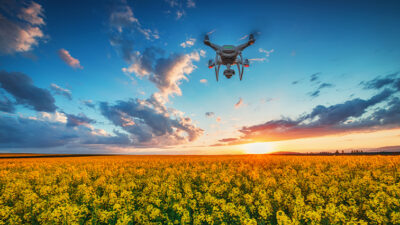The Journey to the New Normal: is Your Organization Prepared to Resume Operations?

In hindsight, it is fair to say that the world was ill‐prepared to cope with the COVID‐19 pandemic. Although not commeasurable to the Black Death of the 14th century or the Spanish Flu of 1918, the propagation of this virus, when coupled with the devastating impact it has had on social interaction and general day-to-day business, makes it one of the more remarkable events to occur in these days of enlightenment.
Without a doubt, there will be ample time to perform the after‐action assessment of how we got here. However, at the end of the day, it is our collective responsibility, now, to ensure we survive this critical period. Aviation is the most efficient means of transportation and a cornerstone of the U.S. and world economies Consequently, it is up to each of us to do our part, thoughtfully, to rebuild confidence in our aviation system.
Responding to the Coronavirus Crisis
In discussions with CEOs and business leaders, we’ve learned that several have effectively managed the immediate response via the use of their reactive planning documents, such as Emergency Response Plans (ERPs). Others, when asked about business continuity and the resumption of operations in the “new normal,” are seeking guidance. Historically, aviation businesses have gone back to normal operations following a crisis without much fanfare, as many simply focus on getting back to business “the way it was.” However, this global pandemic has impacted not only the entirety of the aviation community but also our way of living by affecting an individual’s most basic needs: food, shelter and a livelihood.
The reality is that the aviation industry is in the midst of a substantial slowdown in operations with no silver bullet in sight. The return to what we believe to be normal operations will take a long time, as the science, countermeasures, and possible cure to this virus continue to evolve. The consequences to aviation are being felt as we write this, with the reduction in revenue, furloughs and layoffs, parked aircraft, seating capacity restrictions, and potentially massive backlogs in regulatory and/or industry-mandated activities.
Getting Back to Business
So what is the way forward as we see it? Our view is to plan, plan and plan by developing a series of scaled strategies to return to normal operations in several intermediate steps while we are coming to terms with the new normal. We can all agree that the actions taken thus far have been reactive in nature. As we begin the “new normal” planning process, you must cast a wide net to include all of the direct and indirect influencers to your business.
Here are some areas you should be brainstorming with your team:
- Do you have a defined policy and process to protect employees and customers when entering your facility?
- Do you have a real-world, easily implementable hygiene and infectious disease control program?
- Have you developed strategies to prevent transmission of airborne contaminants within your facility?
- Have you sourced the necessary PPE (personal protection equipment) and developed a use protocol?
- Does your staffing plan ensure that you have the qualified resources necessary to handle the growing workload as operations resume, and do you have triggers to draw up/down staffing levels as demand dictates?
- How are your third‐party service providers handling your current operations? Are they a part of your disease control plan?
- How comprehensive and effective are your fleet and facilities sanitizing plans?
- What steps are you taking to ensure that your aircraft are maintained in accordance with applicable regulatory requirements? How are you tracking and recording those temporary actions?
- What specific actions are you taking for your flight crews to maintain their qualifications?
- With the exemptions being granted by regulators, how are you adapting your crew scheduling program for these temporary conditions and the eventual return to normal when the exemptions are lifted?
- How are your compliance monitoring program and subsequent audit/surveillance schedules being kept current? Have you designed and implemented alternate (interim) surveillance/audit plans?
These are but a few of the complex questions that cannot be answered easily. We encourage you to conduct a self‐evaluation of how your business and specific operations will recover from this unfortunate event and return to what will be the new normal.

AvMaSSI provides safety, security and operational integrity evaluations, consulting and auditing to airlines, airports, charter and corporate operators, OEMs, marine operators, seaports, governments, international agencies and financial institutions the world over. AvMaSSI provides IS-BAO and IS-BAH preparation and audit services and supports Global Aerospace and its SM4 and Vista Elite Programs with focused safety/SMS, security, regulatory compliance and IS-BAO auditing services. AvMaSSI is a proud member of the Global Aerospace SM4 partnership program.
http://www.Avmassi.com
© 2025 Aviation & Marine Safety Solutions International. All Rights Reserved.
Next ArticleRelated Posts

Part 108: The Next Step in BVLOS Integration and Drone Innovation
As the drone industry awaits the Federal Aviation Administration’s (FAA) forthcoming Part 108 regulations, the landscape of Beyond Visual Line of Sight (BVLOS) operations stands on the brink of transformation. These anticipated rules aim to standardize BVLOS flights, enabling more complex and expansive drone missions across various sectors.

Giving the Hazard Log the Attention It Deserves
Safety risk profile. Hazard log. Hazard risk register. Whatever you call it internally, one thing is clear: It is a fundamental requirement in your safety management system.

